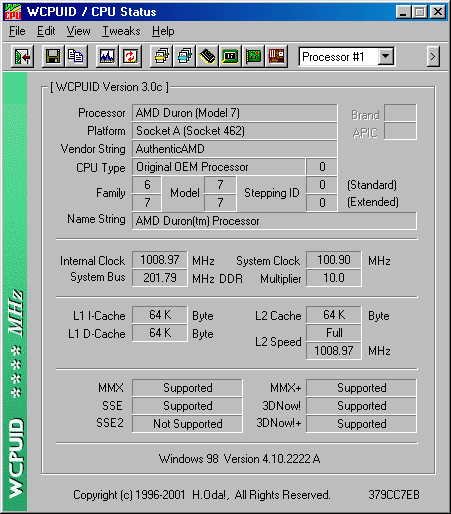AMD's Duron Reaches The Giga Hertz Barrier
Duron Now With 'Morgan'-Core, Continued
The socket remains the same, but you can't just plug the new Duron in your old SocketA motherboard, because 'Morgan' needs to be recognized by the BIOS and that only works after you flashed the very latest BIOS-update onto the board. We tried it here with a good old Asus A7V rev. 1.02. Using an 'old' Duron or Athlon processor we flashed the latest BIOS (rev. 1008) on the A7V, then we plugged in the new Duron and the board booted without any problems. Windows reported SSE-support, which is the definite sign that the BIOS recognizes and supports 'Morgan' properly.
Motherboards that lack the BIOS-support for 'Morgan' will either not boot at all or they will not run the new processor properly or at least not report SSE-support (in e.g. WCPU or SiSoft's Sandra). The same is actually valid for the (still upcoming) Athlon 4 processor (Palomino-core) for desktop computers, which comes with the same enhancement features. Once a motherboard is able to handle 'Morgan' it should also work with 'Palomino' and vice versa. The situation is a good test for the quality of your motherboard maker, because only the good ones supply BIOS-updates on time, the lame ones don't. Asus is probably the best motherboard maker in regards to BIOS updates, but it still continues to overclock each and every processor by a fraction of a MHz to be able to win benchmark competitions.
Get Tom's Hardware's best news and in-depth reviews, straight to your inbox.
Current page: Duron Now With 'Morgan'-Core, Continued
Prev Page AMD Launching The Launch Next Page What's The Catch Of Morgan's New Features?